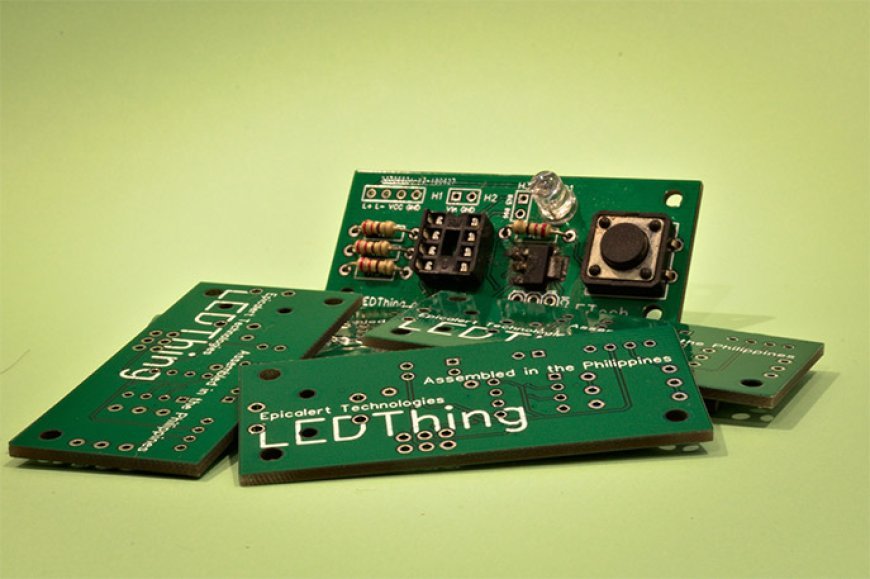The Future Of Electronics Is HDI PCBs

The world of electronics is constantly evolving, and with advancements in technology, the need for more compact, efficient, and reliable electronic components continues to rise. Among the key innovations in the realm of printed circuit boards (PCBs), HDI printed circuit boards have become a significant trend. As electronics become more powerful, miniaturized, and interconnected, HDI PCBs are poised to lead the way, offering unmatched performance and capabilities.
High-Density Interconnect (HDI) PCBs have gained significant attention due to their ability to meet the increasing demands of modern electronic devices. These boards are known for their compact design, superior electrical performance, and ability to support complex designs that traditional PCBs cannot accommodate. As we look ahead, HDI PCBs will continue to shape the future of electronics, offering unique advantages across various industries.
Understanding HDI Printed Circuit Boards
At its core, an HDI printed circuit board is designed with higher wiring density than conventional PCBs. It features more compact routing, finer lines, and smaller components, which help in creating smaller, lighter, and more efficient electronic devices. These boards utilize advanced techniques such as microvias, buried vias, and blind vias to create more interconnections in a smaller space. This allows for complex circuit designs while maintaining optimal functionality and performance.
High-density interconnect PCBs enable devices to operate at higher speeds and with greater reliability. The smaller board size makes it easier to integrate more features, making them ideal for smartphones, wearable devices, automotive applications, and other high-tech industries where space is at a premium.
Key Benefits of HDI PCBs
-
Compact Design and Miniaturization
One of the primary reasons HDI printed circuit boards are gaining popularity is their ability to facilitate the miniaturization of electronic devices. With the demand for smaller, more powerful gadgets, manufacturers are turning to HDI PCBs to help reduce the overall size of their products without compromising on performance. These boards allow for more efficient space usage by providing dense and compact interconnections, which is ideal for devices like smartphones, tablets, and wearables. -
Improved Signal Integrity and Speed
As the speed of electronic devices continues to increase, it’s essential for PCBs to provide excellent signal integrity. High-density interconnect PCBs excel in this area due to their reduced trace lengths, which help minimize signal interference and loss. This enhanced signal integrity allows for faster and more reliable data transmission, making HDI PCBs the perfect solution for high-speed applications like 5G networks, high-performance computing, and advanced automotive systems. -
Reduced Manufacturing Costs
Although HDI PCBs are more complex to manufacture, the benefits they offer can lead to reduced overall production costs. By utilizing space more efficiently and supporting advanced technologies such as microvias, HDI PCBs enable manufacturers to design and produce more compact, feature-rich devices. This efficiency can result in lower costs in the long term, particularly for large-scale production runs. -
Enhanced Reliability and Durability
As electronics become increasingly integrated into everyday life, ensuring their reliability is crucial. HDI printed circuit boards are designed to be more durable and capable of withstanding harsh environments. This makes them ideal for industries like automotive, aerospace, and industrial automation, where components need to function reliably under extreme conditions. -
Improved Thermal Management
Another key advantage of HDI PCBs is their superior thermal management capabilities. The compact nature of these boards allows for better heat dissipation, which helps prevent overheating and prolongs the lifespan of electronic devices. With the growing complexity of modern electronics, thermal management is becoming a critical factor, and HDI PCBs are perfectly suited for addressing this challenge.
The Role of HDI PCBs in Emerging Technologies
As technology continues to evolve, high-density interconnect PCBs will play a vital role in enabling the development of next-generation electronic devices. Here are some areas where HDI PCBs are expected to make a significant impact:
-
5G and Telecommunications
The rollout of 5G networks is one of the most anticipated technological advancements in recent years. To meet the demands of high-speed data transmission and low latency, HDI printed circuit boards are essential. The compact design of HDI PCBs enables them to accommodate the small form factors and high-performance requirements of 5G infrastructure and devices. As 5G technology continues to expand, the demand for HDI PCBs will likely increase. -
Wearable Technology
Wearable devices such as fitness trackers, smartwatches, and medical devices require compact PCBs that can fit into small spaces while offering excellent performance. High-density interconnect PCBs provide the perfect solution for these applications by allowing manufacturers to integrate more features into smaller, lighter devices. The miniaturization of wearable technology is expected to accelerate as HDI PCBs become more prevalent in the market. -
Automotive Industry
Modern vehicles are increasingly relying on complex electronics to power various systems, from infotainment to advanced driver assistance systems (ADAS). HDI printed circuit boards are crucial in the automotive industry as they enable the integration of high-density circuitry in a limited space, making them ideal for use in electronic control units (ECUs) and other automotive components. The growing trend of electric vehicles (EVs) and autonomous driving technology will further drive the need for HDI PCBs. -
Medical Devices
The medical industry is experiencing rapid growth in the demand for more sophisticated, compact, and reliable devices. High-density interconnect PCBs are essential in this field as they enable the development of smaller and more efficient medical devices, such as portable diagnostic tools and implantable devices. HDI PCBs offer the necessary precision, durability, and miniaturization needed for medical applications, where space and performance are critical.
The Future of HDI PCBs
The future of electronics is undeniably tied to the development and adoption of HDI printed circuit boards. As devices continue to become more powerful, efficient, and compact, HDI PCBs will be the backbone of innovation. Their ability to support high-density interconnections, superior signal integrity, and enhanced durability makes them an indispensable technology for the next generation of electronics.
In the coming years, we can expect to see even more industries adopting HDI PCBs as the demand for miniaturization, speed, and performance increases. Companies like PCB Runner are already at the forefront of this technological shift, offering cutting-edge solutions to meet the needs of businesses and consumers alike. As HDI PCBs continue to evolve, they will enable new possibilities in the world of electronics, driving the development of smarter, faster, and more reliable devices.
Conclusion
The future of electronics is bright, and HDI printed circuit boards are at the heart of this revolution. With their ability to meet the demands of modern electronics, from compact designs to improved performance, HDI PCBs are set to lead the way. As industries continue to adopt this technology, we can expect even more breakthroughs in electronics that will shape the way we live, work, and communicate.
What's Your Reaction?

































































